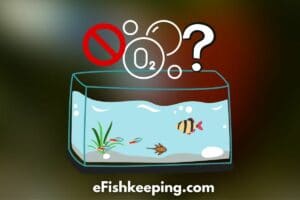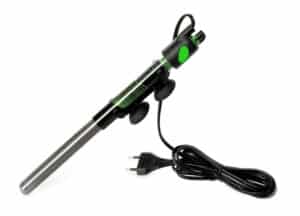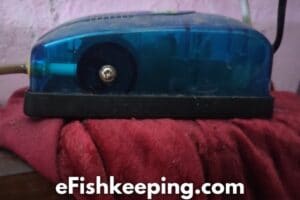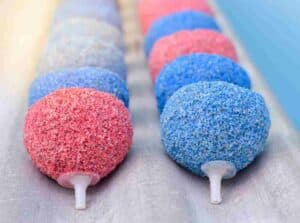I have 3 aquarium air pumps for three of our home fish tanks. And we have been using them for quite some time now. So I can totally relate to your situation.
If you are wondering how long aquarium pumps last and how long to run them, this is the perfect guide for you. Read on till the end to clear your all doubts.
Here’s How Long Aquarium Air Pumps Last:
Generally, aquarium air pumps can last for a few months to years. On average, you can expect them to last for about 6-12 months on the lower side while 4-5 years or more on the higher side.
Before we dive further, let’s clear up some confusion about terminologies.
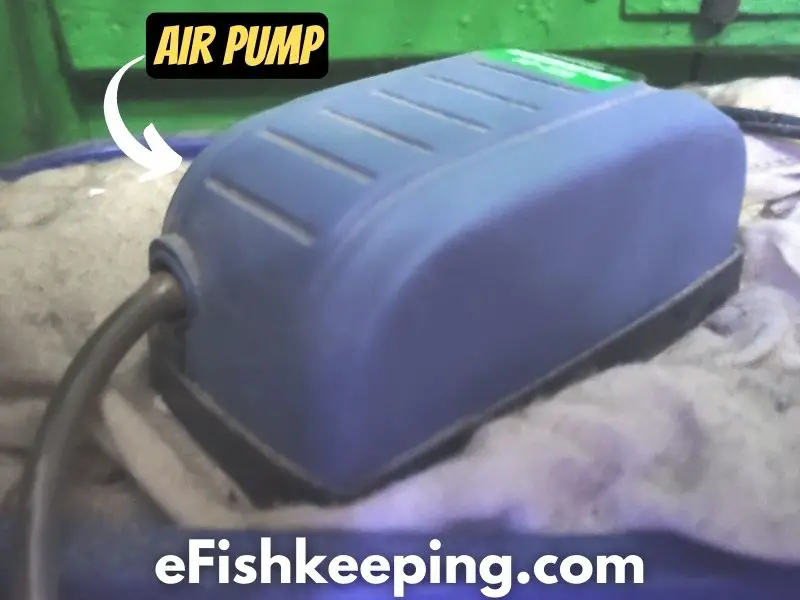
#1. What Is An Air Pump? A mechanical device kept outside of the aquarium whose primary purpose is to pump air into the aquarium system. It is generally connected with other fish tank devices like an air stone, sponge filter, etc.

#2. What Is An Air Stone? An air stone (also called an aquarium bubbler) is a device that creates small fine bubbles in the aquarium. An air pump is connected with the air stone by which the tiny bubbles are produced. Learn more about air stones in this guide.
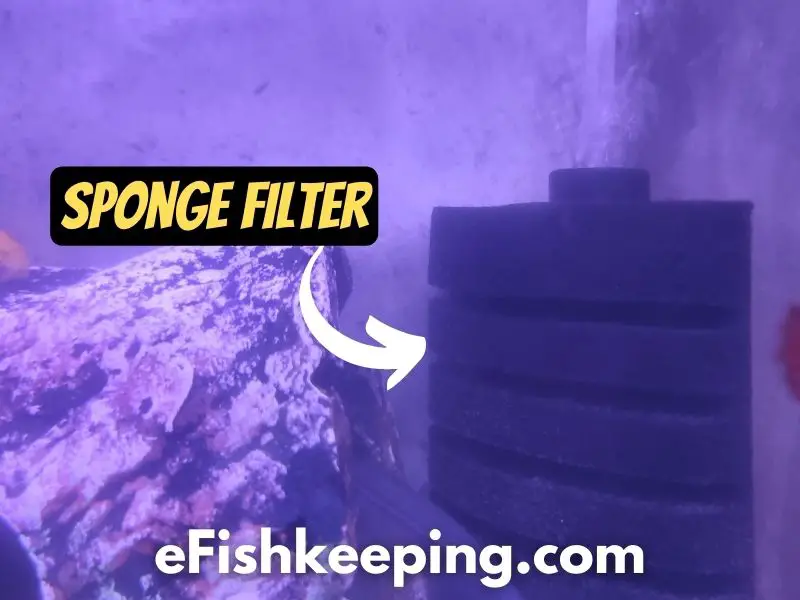
#3. What Is An Aquarium Filter? As the name of the aquarium filter itself says, its main purpose is filtration. Keep in mind that an air pump doesn’t filter the aquarium. It only provides airflow to the attached device.
On the other hand, an air stone creates bubbles.
Whereas an aquarium filter helps in:
- Removing the toxic buildup of ammonia and nitrates
- Cleaning the water of debris elements
- Aerating the fish tank water so that your fish can breathe.
Concept Clearing Time! Remember that the air pump doesn’t directly provide Oxygen to the fish. The air pump definitely helps in Oxygen addition to the tank, but not the way you think. The air pump actually helps in water circulation and the surface area agitation.
Gaseous exchange occurs at the water surface. Carbon Dioxide leaves the water while Oxygen enters the water. When the bubbles hit the surface and pop, this phenomenon creates surface agitation. And as the surface is agitated, the gas exchange increases.
Does Running the Air Pump All The Time Affect Its Lifespan?
As a general rule, running the air pump all the time can affect its lifespan because more work means more wear and tear and, as a result, a shorter operational lifetime. However, even by running it all the time, you can expect a decent life from an air pump.
Remember, air pumps are mechanical devices. And as they have to undergo more work, more wear and tear will occur.
A time will eventually come when you will have to replace them with a new one.
Should I Turn Off The Air Pump At Night?
Ideally, you should run the air pump all the time because it plays a vital role in water circulation and water surface agitation (by pumping air to the device like an air stone). However, if you have other equipment doing anything similar, you can turn the air pump off for a few hours at night.
Remember, an air pump is not a necessity for the fish or the tank system. Not all fish tanks will need air pumps. What is essential is the availability of enough Oxygen in the fish tank system.
If you can arrange the aquarium equipment so that the appropriate water circulation and water surface agitation are maintained in a fish tank, that’s totally cool. You won’t need an air pump.
If the fish tank surface is entirely still, then the gas exchange that happens is probably not appropriate enough for your fish’s health.
But if you add an airstone connected with an air pump, it can add that surface agitation into the fish tank system and thus promote the gaseous exchange at the surface.
So having an air pump system for your fish tank is a good option.
Read: Can You Have Too Much Oxygen In A Fish Tank?
How Long Should You Run An Air Pump In A Fish Tank?
As a general rule, you should run an air pump in a fish tank all the time, 24 hours a day, unless you have any other equipment that serves a similar purpose. Running the air pump all the time helps in proper water circulation, surface agitation, and ensures enough oxygen availability for the fish to breathe.
The main idea is always to have some circulation, surface agitation going on in your fish tank system.
If you fail to have any water circulation, don’t be surprised to see most of your fish gasping for air at the top of your tank! That has happened a few times until I developed a habit of checking if the air stone is producing bubbles all the time or not!
All our family members often randomly check the tank to see if all the equipment (the air stone, air pump, etc.) is working correctly or not whenever they pass by the tank!
Read: Do Bettas Need Air Pump?
My Setup for Running The Air Pumps In 3 of My Fish Tanks:
Here I’m sharing my air pump setup overview for all of my three fish tanks. (So that you can have a real-life idea of what to expect)
Fish Tank 1:
- Relatively Bigger Size Tank of all three
- It has one Aquarium Top Filter that doesn’t use the Air Pump (The Aquarium Top Filter runs mainly on electricity)
- I also have an air stone placed in the tank. And it is connected to an air pump.
What I Do Here? I keep the air stone connected with the air pump, ON, all the time, 24 by 7. And I run the top filter for a few hours a day to filter the tank water and keep it clean.
Fish Tank 2:
- Relative Medium Size Tank of all three
- It has one powerhead connected with a top filter (the setup is almost like tank 1, but the pump’s size is relatively small)
- In addition, I also have an air stone and an attached air pump with it.
What I Do Here? Same approach as I do with tank 1. Keeping the air pump attached with the air stone turned on all day and night, every day. And I turn on the powerhead connected to the top filter only for a few hours a day for filtration and tank water clean-up.
Fish Tank 3:
- Relatively small in size tank out of all three.
- It only has one sponge filter attached to an air pump.
What I Do Here? Here I keep both the sponge filter and the air pump connected to it ON all the time. (In this tank, I don’t have any air stone as the sponge filter seems to be enough for both adequate filtration and circulation of the tank water)
What Happens When You Run The Air Pump All The Time?
In general, nothing significant happens to the air pump except that running all the time will eventually cause it to wear and tear. So finally, after using it for a few months or years, you will have to replace it with a new one once it stops working.
Since the air pump typically sits outside of the fish tank, the tank water won’t affect it directly. Mainly, the thing that can happen is that the mechanical output and functioning can decrease over time due to usage, wear, and tear.
If your air stones stop producing bubbles, don’t just start blaming the air pump.
- First, check if the air stone is not clogged up with algae or tank debris and clean it accordingly. Doing this should start the air stone functioning again as usual.
- Also, make sure to check that the airline tubes are correctly connected at the right place.
I can’t tell you more about how many times I found no bubbles coming out of the air stone, and the problem behind the issue was just with the airline tubing connection.
I often found that the tubing was not attached appropriately to the outlet portion of the air pump device. But when I re-inserted it with a bit of force to ensure its attachment with the device, everything started working again as usual.
If your air stone is clean, all the airline tubings are appropriately connected, but still, if you face any issues, the problem can be with the air pump device itself.
If you like dealing with air pump mechanics, you can choose to repair them. Here’s a video that shows how to repair an aquarium air pump at home:
Final Thoughts
You should run the air pump all the time, 24/7, for proper water circulation, surface agitation, and, thus, to ensure enough oxygen availability for the fish to breathe. However, you can occasionally shut down the air pump if other devices serve a similar purpose or while you add CO2 to the tank.
In general, the air pump can last for around a few months to a few years, depending on the quality of the air pump device and the wear and tear it goes through.
That’s it! I hope you found this guide helpful. Please share this article with others if you really found the content helpful and informative. Thank You!
I hope to see you again on this website 🙂 (Meanwhile, you can also check out my YouTube channel with the same name as eFishkeeping)
Read More: How Long Can Fish Live Without Air Pump?
Hi! I’m Praveen Ghoshal, the founder of eFishkeeping.com. Inspired by my Dad, I got interested in fishkeeping when I was a kid. Since then, I have been involved with this hobby. Currently, I have 3 fish tanks at our home, and I enjoy this hobby with my full family. Read more about me here.


